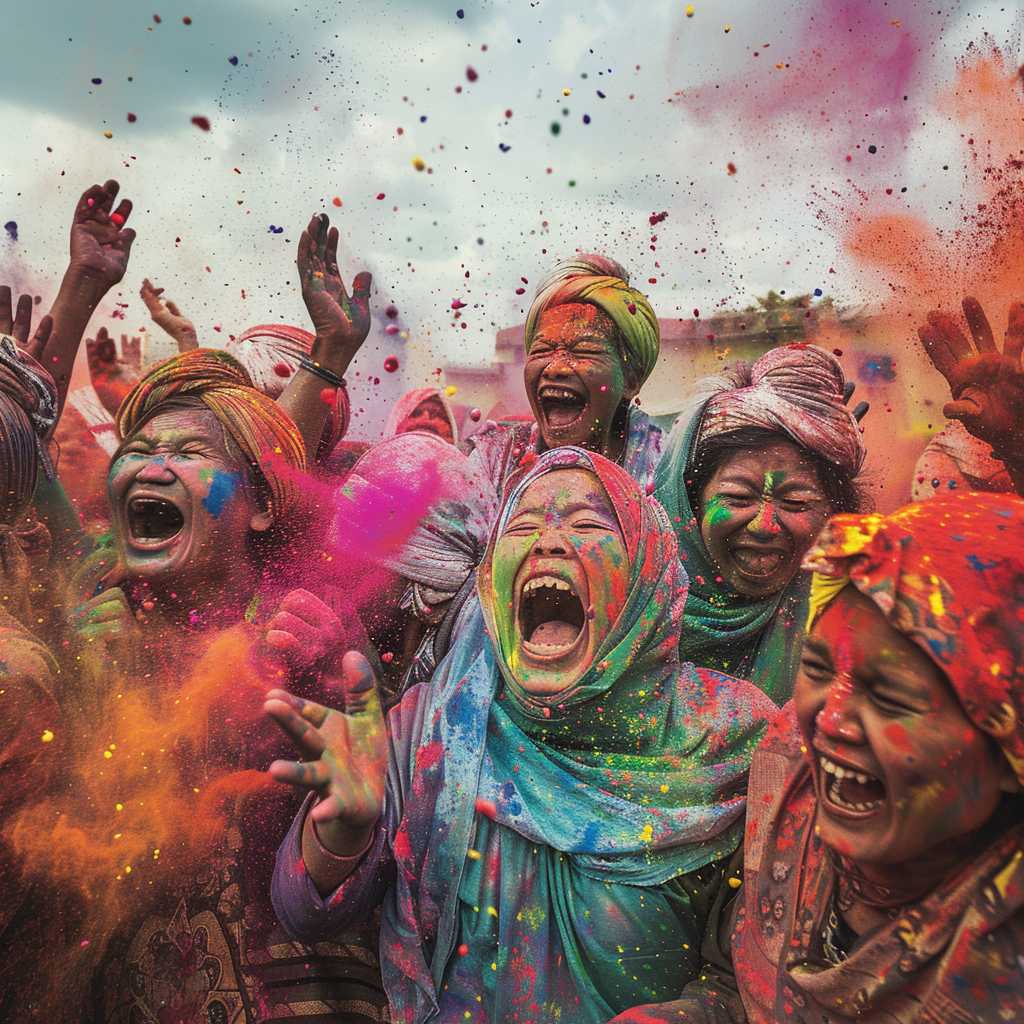## Holi 2024: The Festival of Colors Brings Joy Worldwide
Holi, the vibrant festival celebrated by millions around the globe, is expected to bring more color and joy into people’s lives in 2024. Known as the Festival of Colors, Holi is an ancient festival with deep-rooted cultural and spiritual significance. It heralds the arrival of spring and end of winter and symbolizes the triumph of good over evil.
Background and Significance of Holi
Holi’s origins are traced back to several legends within Hindu mythology, primarily associated with the demonic king Hiranyakashipu, his son Prahlad, and the fiend Holika. Regardless of the differing origin stories, they all underscore the main theme—good ultimately prevails over evil.
This festival is also associated with the enduring love between Lord Krishna and Radha, adding another layer of depth to its celebration. In different parts of India and Nepal, celebrations vary, but all share the common use of vibrant colors symbolizing happiness, love, and the victory of virtue.
Preparations and Celebrations
Preparations for Holi begin weeks in advance with individuals shopping for colors powder—known as ‘gulal’—and water guns or ‘pichkaris’. Communities also prepare sweets such as ‘gujiya’, ‘thandai’ which is a spiced-milk beverage, and other traditional dishes.
As Holi approaches, larger communal events are organized that include music, dance, and feasting. Bonfires known as ‘Holika Dahan’ are lit on the eve of Holi to symbolize the burning away of evil spirits. This ritual is accompanied by prayers that evil inside us should be destroyed just like Holika, making it a time for introspection.
The main event of Holi involves people color-each other with gulal and drench each other with water via buckets, water guns or balloons. Friendships reignite, grievances are forgotten and made up over singing and dancing under clouds of colorful powders. Moving beyond India’s borders, Holi has gained popularity internationally in countries with large Indian diaspora and also among non-Indians who enjoy the festivity’s free-spirited joyfulness.
Cultural and Social Impact
Holi has a significant social impact as it acts as a leveler among different socioeconomic statuses. It reminds society that everyone is equal in the pursuit of happiness and joy. Traditional stratifications are blurred as people from all walks of life come together to celebrate.
Moreover, as an emblem of forgiveness and new beginnings, fairness and harmony, it encourages individuals to repair strained relationships. Amid intense hues flinging through the air, barriers crumble perhaps more easily than at any other time of the year.
Environmental Considerations
Many organizations continue pushing towards eco-friendly methods of celebration. Concerns about synthetic dyes affecting health and safety led some activists to promote organic colors derived from flowers or roots which are kinder to human skin and Mother Earth.
Precautions are suggested for conserving water during Holi at a time when issues surrounding water scarcity increasingly dominate environmental conversations. Water-saving techniques have become a topic of interest, prompting suggestions like dry Holi ways to retain decree’s spirit without excess consumption.
Holi around the World
Outside its birthplace area on the Indian subcontinent, Holi has caught imagination across diverse cultures and cities worldwide—they host social gatherings where locals enthuse participating both in color play and cultural learning regarding Holi’s history and significance.
In venues from Europe to North America, elaborate parties show processional live music acts fostering cross-cultural recognition universal values such as optimism shared humanity’s joys extracted simple act throwing pigmented powder skyward jubilant defiance long cold shades winter opulent colors blossom spring underfoot above cables liturgic-colored souls intertwined unity announcing warming tides succeeding concluding cold.
